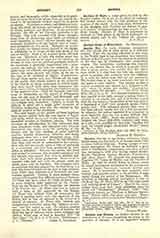

Ancilla Dei .—In early Christian inscriptions the title ancilla Dei is often given to a deceased woman. From the meaning attached to this term in the Middle Ages it has sometimes been assumed, without sufficient proof, that the persons so qualified in the first age of Christianity were consecrated virgins. The inscriptions containing this formula are of two classes: one, in which it is merely stated that a given person was ancilla Dei; the other, from which it is clear that this title was sometimes given to persons who certainly were not religious. It is with the latter class that we are concerned. The former class is the more numerous, but one of the latter is quite explicit. This informs us that a certain monument was erected by a husband to his wife, whom he styles Dei ancilla—”(Laur) entius Rufine coiugi Dei anci(llae).” (De Rossi, Roma Sott., III, p. 11, n. 4). In a Roman inscription of the first quarter of the sixth century a certain Guttes is referred to as ancilla Dei, and it is further stated that she was nonnes—”in presence of the nun Guttes, a handmaid of God” (sub presentia nonnes Guttes ancille Dei). This reference proves that even in the sixth century, ancilla Dei was a title not peculiar to religious; the author regarded it as necessary to state explicitly that she was nonnes (Cabrol, Dict. d’arch. claret., 1992). From the pontificate of St. Gregory the Great (590-604), however, only nuns, as a rule, were qualified by this title: “ancillas Dei quas vos Graeca lingua monastrias dicitis” (Greg. M. Ep., vi, 23).
MAURICE M. HASSETT

